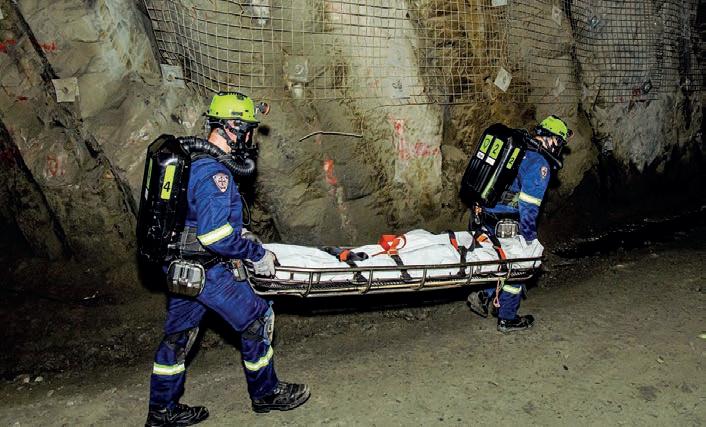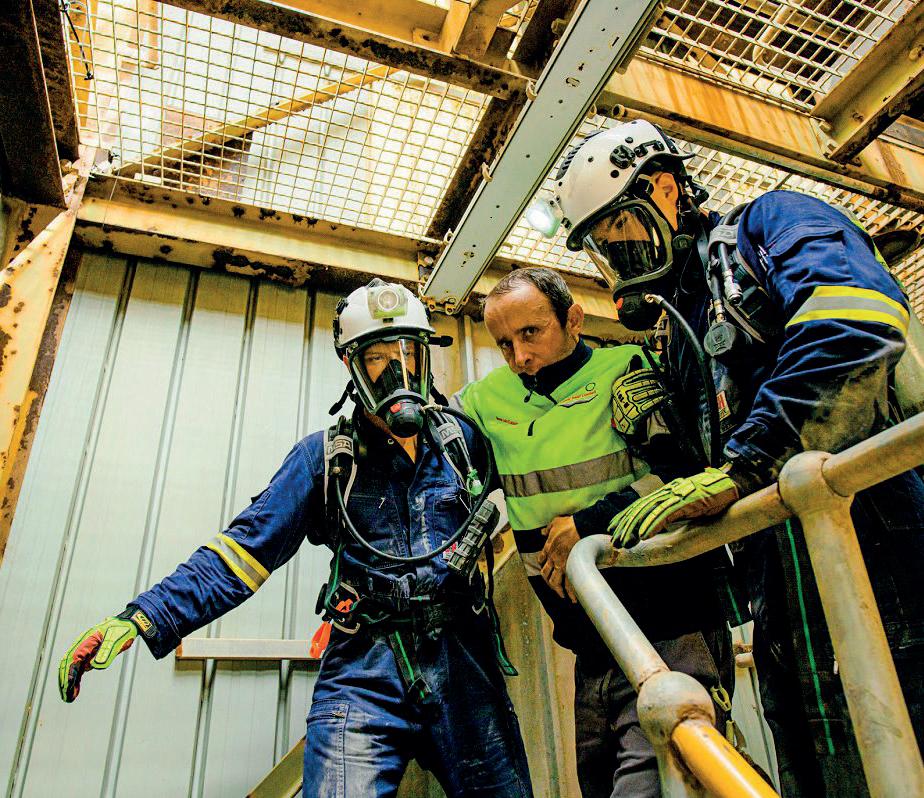
2 minute read
To the rescue
Mine rescue is a highly specialised job, one that requires teams to save trapped and injured miners, fight fires, and respond to all other kinds of emergencies.
These teams need to assess and manage risk to ensure workers’ safety above and below the ground.
And given the potential dangers that perpetually exist on a mining operation, it’s vital rescue teams are well trained and always at the top of their game.
The Victorian Mine Rescue Competition (VMRC) – organised by the Mineral Council of Australia (MCA) Victoria Division, a professional body engaged in representing the interests of member companies operating in, exploring and providing services to the minerals industry in the state – is one of the best opportunities to put those skills to the test.
Running since 1993, the VMRC sees rescue and emergency response teams from various mines around the country competing in a variety of simulated situations, putting their skills to the test and sharing their extensive knowledge with one another.
The 2022 event was held near Bendigo, north-west of Melbourne. It featured eight competing in a range of events, including team skills, firefighting, first aid and rope rescue, as well as a search-and-rescue scenario conducted at Agnico Eagle’s nearby Fosterville gold mine and ISH 24’s safety training facility.
“The scenarios are designed to be as realistic as possible, with actors performing the role of injured workers, featuring highly realistic wounds in a real-world simulation,” MCA Victorian executive director James Sorahan told Safe to Work.
“They are very intense and quite confronting scenarios; however, we need to make them as real as possible in order to apply pressure, ensuring teams receive the most effective training so as to be able to react effectively if confronted with a similar scenario in a real-life situation.”
While the competition between the teams can be intense, everyone is happy to share rescue knowledge related to their areas of expertise, embracing the opportunity to learn new skills from their peers.
“The event seeks to achieve to important outcomes,” Sorahan said.
“Firstly, it’s a training exercise, and this dimension is of deep value for the participants.
“Secondly, there is the competition element, whereby scoring and related information, including detailed reports outlining key performance metrics and insights into effective responses, are passed onto teams for further improvement.”
The competition is a critical part of the industry’s efforts to support highly trained rescue personnel across Australia, significantly contributing to the sector’s commitment of zero harm.
“Emergency mine rescue teams are comprised of volunteers – they could be anyone from a geologist to a truck driver – so this form of training exercise is vitally important to the development of competencies for individual members, as well as fostering team cohesion,” Sorahan said.
Emergency response agencies attended the competition, helping rescue personnel and first responders build capacity in the event in which they are called upon to assist in an emergency.
The categories throughout the competition allow for the different types of expertise, providing teams an opportunity to excel.
“For many years there were two competitions, one for underground mine rescue and another for surface mines,” Sorahan said.
“But a few years ago they brought them together into just one competition.
“It’s great exposure for teams to learn about and experience the various sorts of emergency situations that can arise at different types of mines.

Exposing people to training for different types of mines is also beneficial if they move to a site with unfamiliar emergencies.
The hands-on experience in the competition is supported with feedback from a team of adjudicators, who assess the competitors’ every move.
“One of the major aims of the competition is to bring together emergency response agencies in order to create that important dialogue between mine rescue teams and emergency responders,” Sorahan said.
“There are a range of emergency services that need to work together alongside mine rescue teams, so it is incredibly useful for the mine rescue teams to learn from other emergency agencies.
“For example, we have the CFA team from Bendigo compete along with a contingent from Victoria Police and members from Ambulance Victoria, and bringing these emergency responders together is vitally important.”
The competition doesn’t just better prepare mine rescuers, but also provides realistic training








